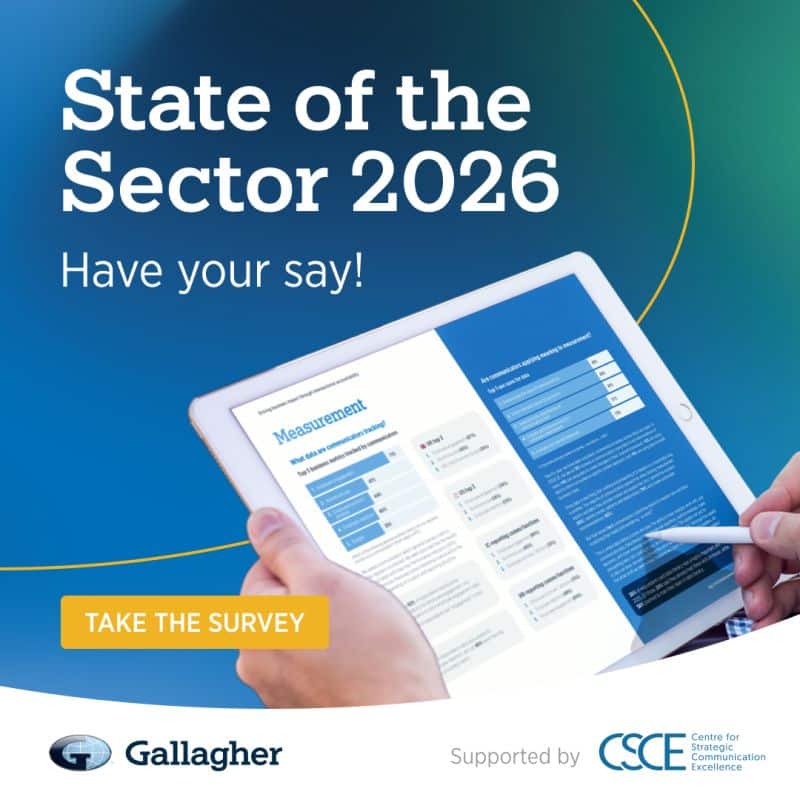The use of the acronym AI is commonplace today, most often referring to technology’s impact on the transformation to a digital economy, currently underway. But what does AI mean to you, the organization that you develop communication for and the stakeholder groups who consume that communication? And, what steps can be taken to ensure you “use” AI appropriately?
Denotative and Connotative Meaning
Let’s look at three terms commonly thought of as AI – artificial Intelligence, augmented Intelligence and analytics intelligence. Denotatively, we can usually parse a difference between each term by using a reliable source for a definition. It is the connotative meaning where we spend time to understand what our message receiver may be thinking and the “hidden meaning” of a term.
The challenge with AI is that neither the denotative nor the connotative meaning is stable among the mainstream population. For instance, if you used Merriam Webster to define artificial intelligence, you get a definition. When you use the same source to define augmented intelligence, Merriam Webster states that augmented intelligence is not in the dictionary. Likewise, analytics intelligence is not found in Merriam Webster. It’s easier to understand why analytics intelligence is not in Merriam Webster because it has more brand usage such as Google Analytics Intelligence. However, the confusion that surrounds the definition of these terms calls for greater explanation when using them. In this type of an environment, the best practice is to define, for the receiver, the acronym and term used each time it is used to ensure consistency.
Maybe it’s the source? You might expect Wikipedia to be more reliable as a mainstream source for AI. Once again, artificial intelligence is found. However, augmented intelligence as a term is not found but you land at intelligence amplified, which certainly gives more insights into the concept. Analytics intelligence yields nothing whether you use upper – brand name – or lower-case letters – a concept term. Clarity is still elusive. As communication professionals, we often deal with connotative nuances in using certain terms. However, with AI, we must be aware of the possible denotative challenges as well.
“Illusion of Explanatory Depth”
Also important in communicating AI is what Steven Sloman, author of The Knowledge Illusion: Why We Never Think Alone, calls “the illusion of explanatory depth — our tendency to overestimate our understanding of how the world works.” The term artificial intelligence was coined by John McCarthy in 1956 but its’ roots can be found in Vannevar Bush’s 1945 work, As We May Think. It is 73 years old! While its evolution to today certainly includes technical clarity and a move to mainstream usage, we can find ourselves “overestimating” how much we know in how AI works or what it is, simply because the term has been around for more than 50 years. We think we know it.
This may, in part, explain the recent increase in instances of AI washing – a marketing effort designed to imply that a company’s brands and products involve artificial intelligence technologies, even though the connection may be tenuous or non-existent. Are we using the acronym and terms accurately? Do we really understand the state of AI today? Do we understand it enough to communicate AI for our organization? As communication professionals, we need to “reverify” what AI means to us, to the organization we develop communication for and the stakeholder groups who consume that communication. We have to stay updated on AI to ensure the communication we develop fosters understanding rather than confusion.
Global Standard’s Context Principle
Communication professionals can refer to the ‘context’ principle in the Global Standard of the Communication Profession to guide their diligence in communicating AI. Specifically, the context principle tells us to understand:
- The internal culture surrounding AI.
- The external AI environment.
- The organization’s AI vision and goals.
- The impact that AI may have on the political, economic, social, technological, environmental and regulatory environments.
- Subject-matter-experts views and positions on AI.
Knowing this information gives us the context for developing AI communication. Communicating AI well requires what every strategic communication professional understands when developing communication in today’s fragmented, complex world – be aware, stay informed and respect what you might not know.





